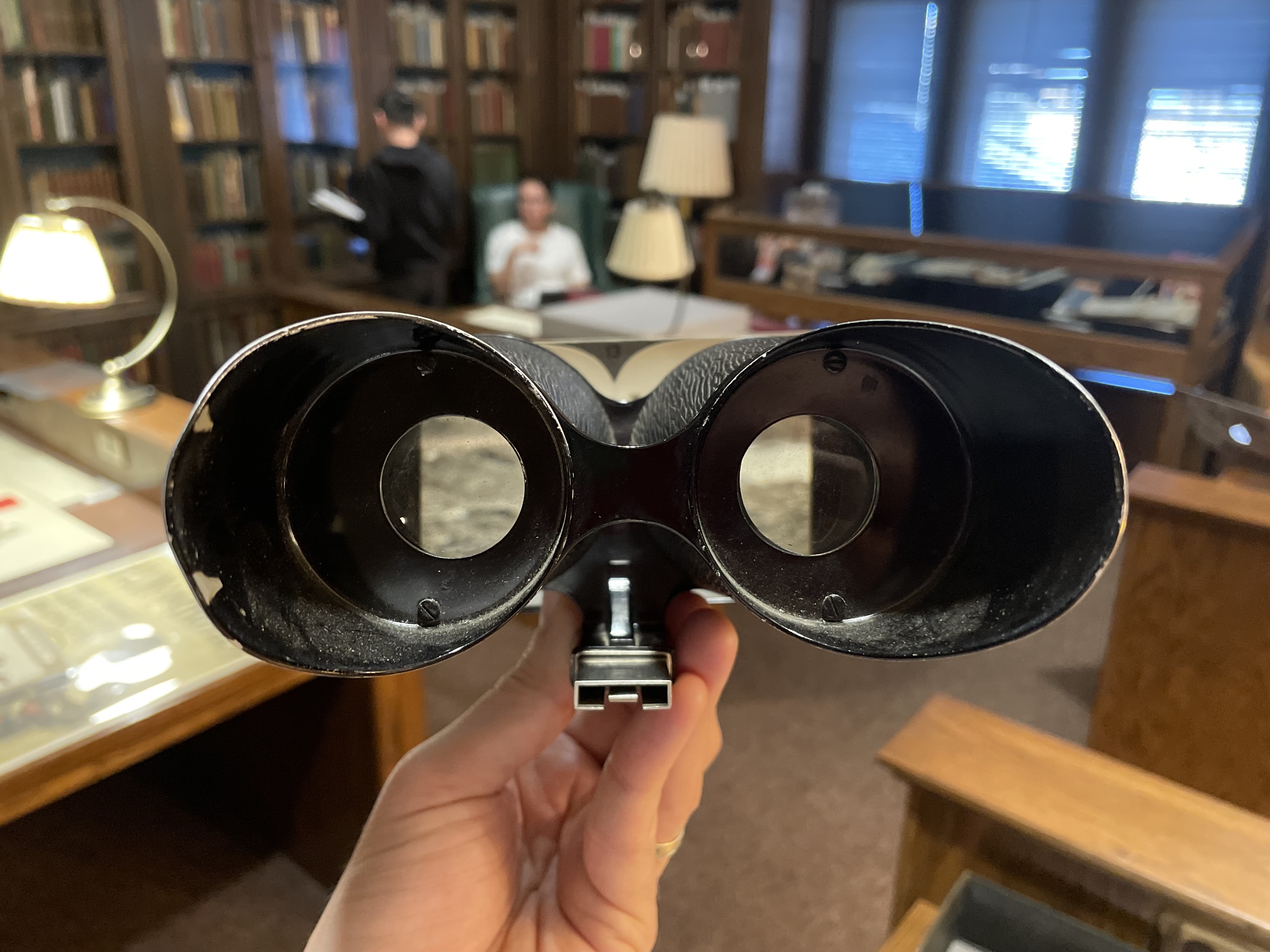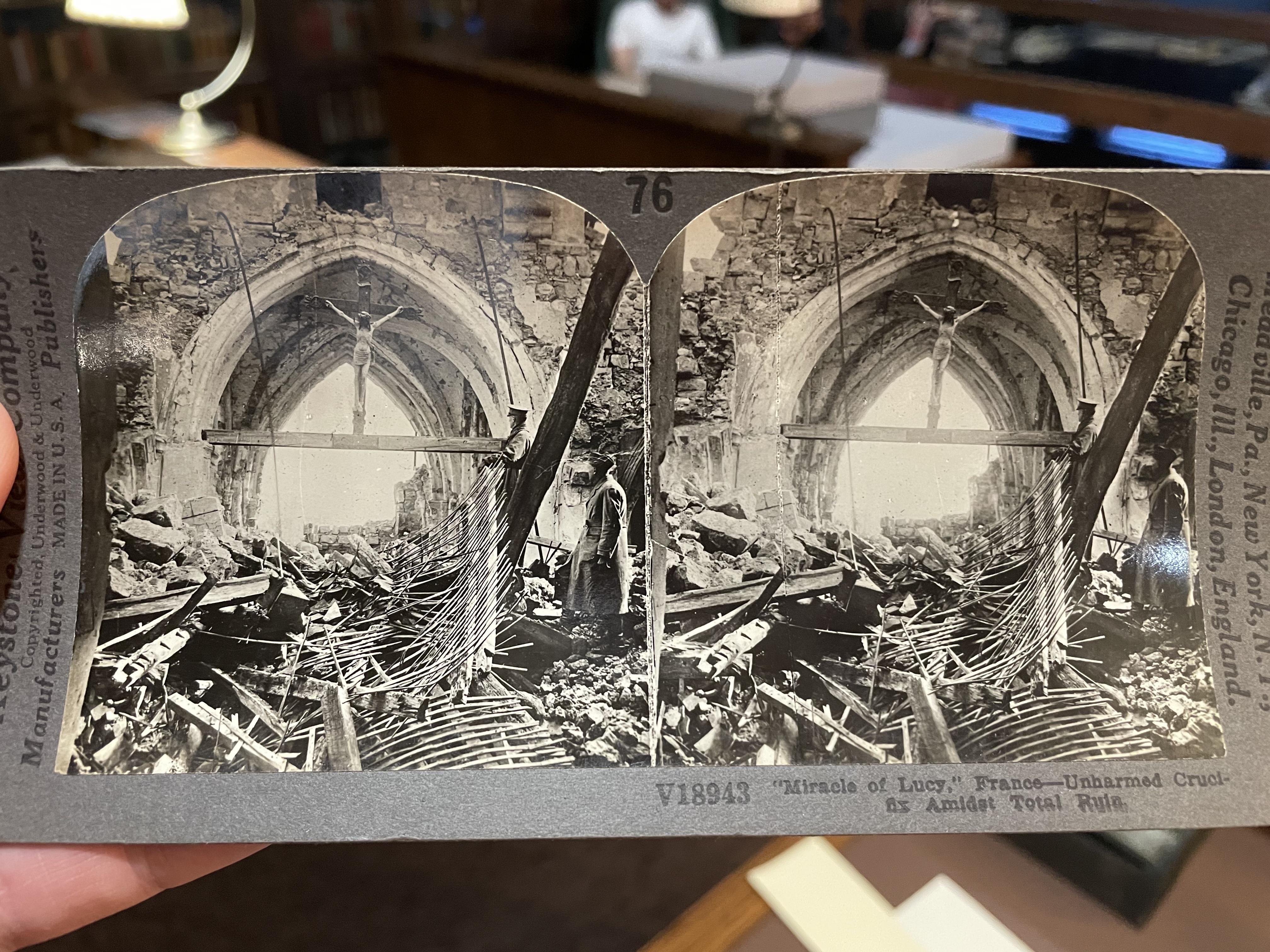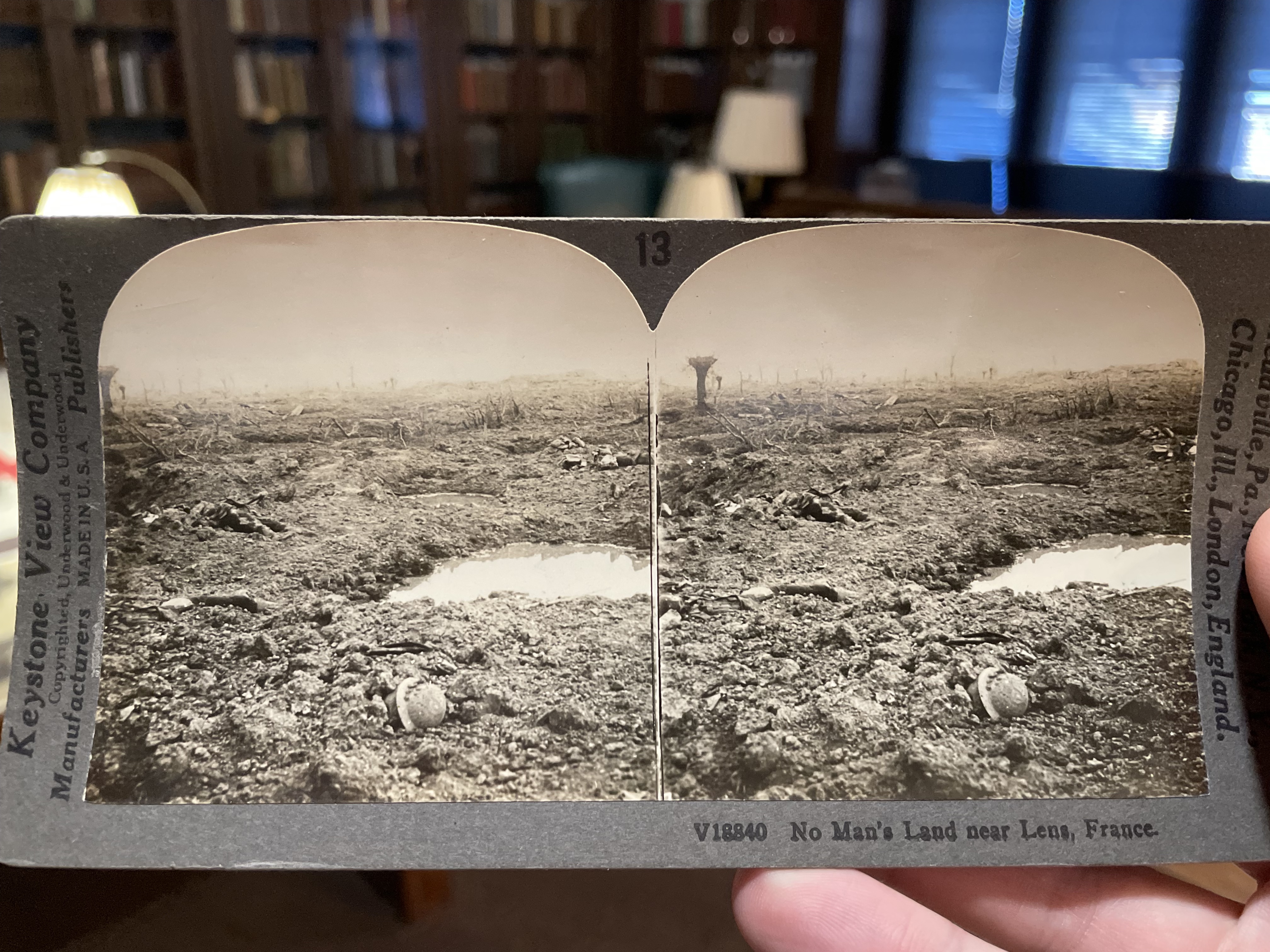 The stereoscopic photographs drew me in during our visit to Special Collections this past Tuesday (2/20). At first the experience was a little frustrating, until I learned to prompt my eyes to synthesize the two halves into a single 3D image by focusing on something in the foreground (bottom of the frame). Once I had that down, I looked at 20 or 30 of the images and was impressed by the subject breadth of the collection. Everything from formal portraits of cleanly military quarters to combat action to the grisly results thereof. It reminded me of Remarque's descriptions of all aspects of life during the War in All Quiet on the Western Front, and also gave me a way to think about Thing Theory.
The stereoscopic photographs drew me in during our visit to Special Collections this past Tuesday (2/20). At first the experience was a little frustrating, until I learned to prompt my eyes to synthesize the two halves into a single 3D image by focusing on something in the foreground (bottom of the frame). Once I had that down, I looked at 20 or 30 of the images and was impressed by the subject breadth of the collection. Everything from formal portraits of cleanly military quarters to combat action to the grisly results thereof. It reminded me of Remarque's descriptions of all aspects of life during the War in All Quiet on the Western Front, and also gave me a way to think about Thing Theory.
Literature of the First World War is striking for its portrayal of the Absurd: ab- (away from or outside of) -surd (the rational, or rational unit). We might understand it as prefiguring and representing a major tenet of Thing Theory: a thing, in one aspect is matter before it becomes an object or after it ceases to be one. An object, in the philosophical sense, is a construct of the mind and therefore already imbued with meaning or associations that are projected onto it. If an object may be a rational construct, then the thing to which it corresponds lies outside of that construction -- is absurd.
 Confronting the inert matter of an object dehabitualizes us from its typical use and valuation (mental constructs), prompts us to perceive it differently. In one sense, Thing Theory explores the strangeness -- or the "unreality," to borrow a common term in WWI literature -- of this new relation. Bill Brown elaborates in "Thing Theory": "We begin to confront the thingness of objects when they stop working for us: when the drill breaks, when the car stalls, when the windows get filthy, when their flow within the circuits of production and distribution, consumption and exhibition, has been arrested, however momentarily. The story of the objects asserting themselves as things, then, is the story of a changed relation to the human subject and thus the story of how the thing really names less an object than a particular subject-object relation" (4).
Confronting the inert matter of an object dehabitualizes us from its typical use and valuation (mental constructs), prompts us to perceive it differently. In one sense, Thing Theory explores the strangeness -- or the "unreality," to borrow a common term in WWI literature -- of this new relation. Bill Brown elaborates in "Thing Theory": "We begin to confront the thingness of objects when they stop working for us: when the drill breaks, when the car stalls, when the windows get filthy, when their flow within the circuits of production and distribution, consumption and exhibition, has been arrested, however momentarily. The story of the objects asserting themselves as things, then, is the story of a changed relation to the human subject and thus the story of how the thing really names less an object than a particular subject-object relation" (4).
 The Thingness of humanity is perhaps the most powerful dehabitualizing characteristic of World War I literature. Brown, though not commenting on WWI, paraphrases Michael Taussig to ask a question that would work well for our literary-historical focus: "does death have the capacity both to turn people into things and to bring inanimate objects to life?" (7). The narrator of All Quiet on the Western Front, after an intense shelling, observes as a "chest leans against the side of the trench, his face is lemon-yellow, in his beard still burns a cigarette. It glows until it dies out on his lips" (128). The human body here is not differentiated ontologically from the other things that surround it. It exists on the same plane as a smoldering cigarette or the liquid remains of two other comrades sticking to the wall nearby, which Tjaden suggests could be scraped up with a spoon and buried in a tin (128). Witnessing the Thingness of the human corpse and the implements at hand confronts us with a completely desacralized relation of subject-object.
The Thingness of humanity is perhaps the most powerful dehabitualizing characteristic of World War I literature. Brown, though not commenting on WWI, paraphrases Michael Taussig to ask a question that would work well for our literary-historical focus: "does death have the capacity both to turn people into things and to bring inanimate objects to life?" (7). The narrator of All Quiet on the Western Front, after an intense shelling, observes as a "chest leans against the side of the trench, his face is lemon-yellow, in his beard still burns a cigarette. It glows until it dies out on his lips" (128). The human body here is not differentiated ontologically from the other things that surround it. It exists on the same plane as a smoldering cigarette or the liquid remains of two other comrades sticking to the wall nearby, which Tjaden suggests could be scraped up with a spoon and buried in a tin (128). Witnessing the Thingness of the human corpse and the implements at hand confronts us with a completely desacralized relation of subject-object.
The stereoscopic photographs in Special Collections likewise document the Thingness of human remains, and all else, in No Man's Land. Photographs are representations of things and thefore already constructed as objects, which makes it difficult to dehabituate oneself from the Objecthood of the things depicted. Yet, perhaps because stereoscopic photographs create an unavoidably artificial illusion of 3D depth through their focus on several discrete planes, they call attention to the equation of things in the pictorial frame and help to effect the dehabitualization. It isn't possible to render the 3D effect here, yet even though the photos aren't synthesized parallactically in the stereoscopic viewer, we can see that human remains and other things (a helmet, the debris of what was once a tree, a horse, an altar, a fence, a wall) share the same ontological absurdity as described by Remarque and the WWI poets that we've read. Corpses in war photographs have a way of looking as though they had never been alive -- the ultimate conversation to Thingness.